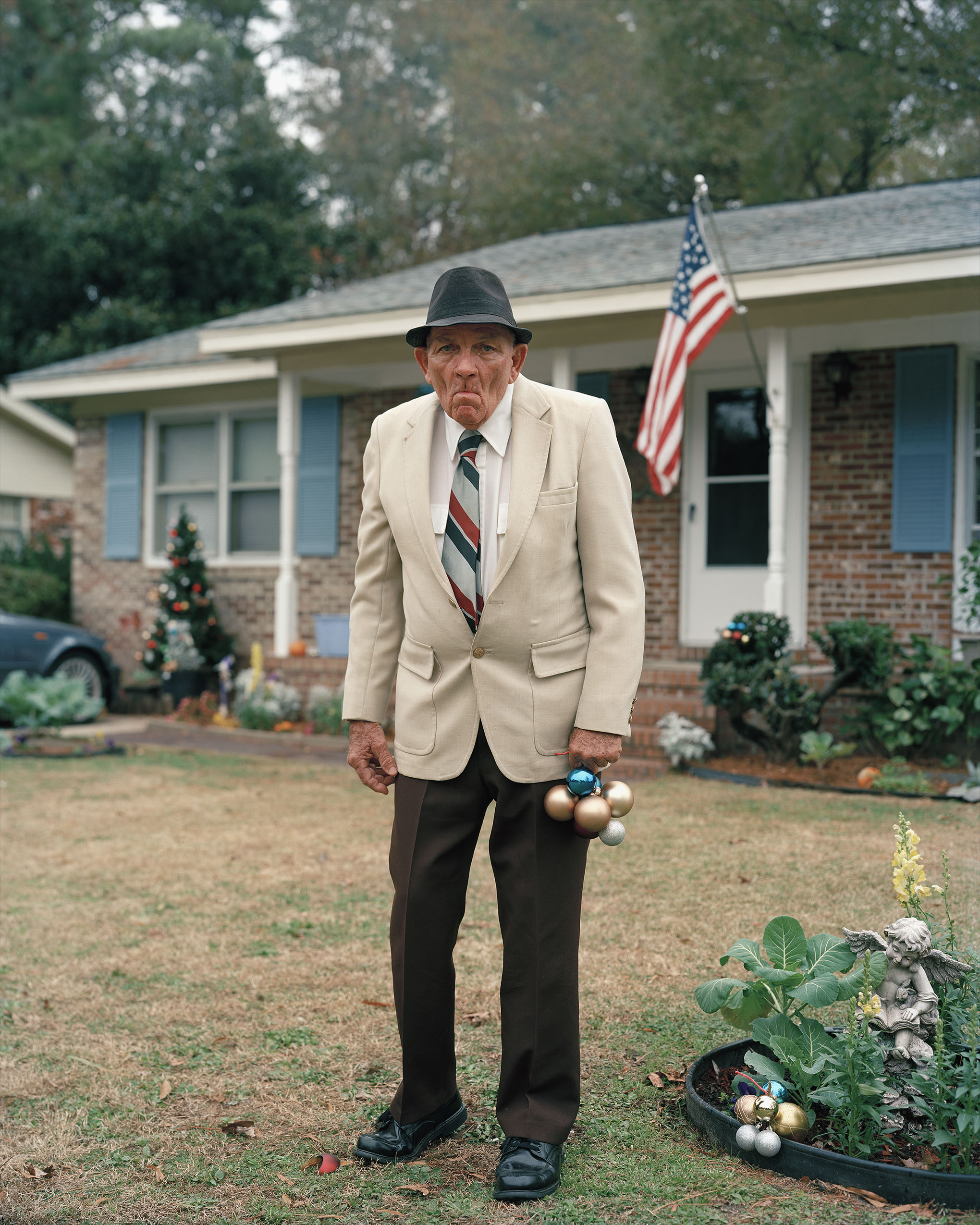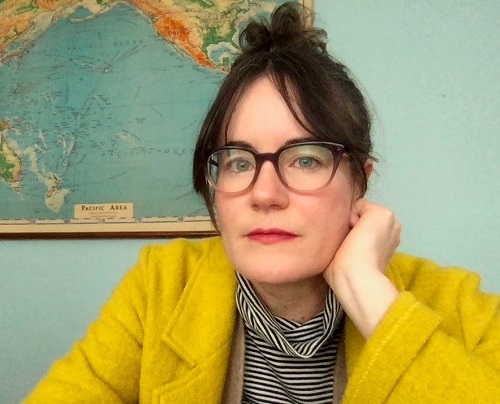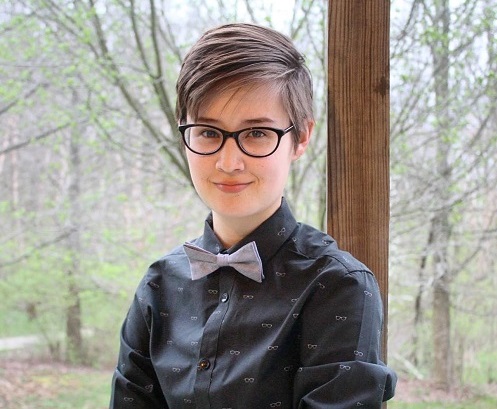Contributors Shena McAuliffe and Tessa Yang’s Dual Interview
15 Minutes Read Time
Managing Editor Lisa Ampleman: We love the chance to put our contributors in conversation—in fact, in addition to our Interviews series, we’ve featured Pas de Deux, a duet interview in which the authors ask questions of each other. This week we’re glad to host a chat between previous contributors Tessa Yang (Issue 17.1) and Shena McAuliffe (Issue 15.1), both of whom published short story collections in the past few months.
Shena McAuliffe: Congratulations on your fabulous story collection, The Runaway Restaurant! It’s such a delightful mix—from the playful flash fiction of “Princess Shipwreck” to the alluring, sexy supermodels of “Biohack.” I love your speculative premises and your keen attention to language. I also know that you’re currently working on a novel. Do you find that you approach the task of writing differently when you’re writing flash fiction versus a short story versus a novel? Do you know which mode or length you’re working in when you begin?
Tessa Yang: I think I’ve gotten better at finding the right-sized container for a story at the outset. Flash, for me, is most conducive to concept-driven pieces where the larger world matters more than character development. “Princess Shipwreck” is a good example of that. We don’t know anything about the princesses as individuals, their relationships with each other, or even why they were on a ship. (Personally I like to imagine they were returning from a princess convention overseas). A longer story would be hard-pressed to ignore those details. When I read or write novels, I’m interested in witnessing characters change over time. And then short stories are somewhere in the middle—more character-focused than flash but, because of their relative brevity, more subtle in their depiction of character transformation than novels. The longer the work, the more structured my approach. My novel has an outline, for instance; I’ve never needed to outline short fiction. The narrative unspools and I follow. But a novel is so long, I’m more likely to get tangled up and lose my way.
I have a similar question for you, but about genre. One of the many things I loved about your just-released story collection, We Are a Teeming Wilderness, was how much I learned from each story—from Egyptian funerary customs to the manufacturing and marketing of silk hosiery! These strike me as being meticulously researched pieces, and since I know you also write nonfiction: What makes you decide to take a subject and write a story about it, versus an essay? Have there been any subjects you’ve explored in both fiction and nonfiction?
SM: Research is certainly key to my process in either genre. I tend to write fiction when there’s a compelling gap in what I can learn about a person or subject, especially when I’m writing historical fiction. I’m drawn to people in history who seem to have had a progressive vision or insight about one thing, but are completely wrong about something else—visionaries with blind spots. For example, Eliza Farnham, the protagonist of my story “Benevolence,” was the first matron of the women’s wing at Sing Sing prison. She recognized that people could change or grow, that having committed a crime did not mean a person was inherently or permanently criminal, but her methods of education or rehabilitation included the practice of phrenology (which relies on racist stereotypes that quickly lead down an ideological path to genocide). Anyway, people and their infinite complexities and contradictions become the characters who often lead the way when I’m writing fiction.
But this decision about genre can be unpredictable. “The Other Matter,” which is one of the most recent stories included in my book, started as research for a novel and then was going to also be an essay about gloves. One of the things I learned in my research was that one of the earliest mentions of gloves in literature is in the Odyssey, when Odysseus’s father, Laertes, is working in his garden. I got sidetracked from the essay and ended up writing the story of Odysseus’s reunion with his father instead. But maybe I’ll write that essay now that I’m thinking of it again, and I don’t know if any of this will make it into the novel in the end.
One of my favorite stories in your book is “Haunting Grounds,” which is a ghost story, and like many ghost stories, it includes some haunting history. In this case, Nancy carries with her to the afterlife some painful memories of the incarceration of Japanese Americans during the Second World War, including her family. Like many of your stories, this one is both serious and humorous, rooted in recognizable reality yet completely, delightfully whimsical and strange. Is there a method to how you balance such qualities in your stories?
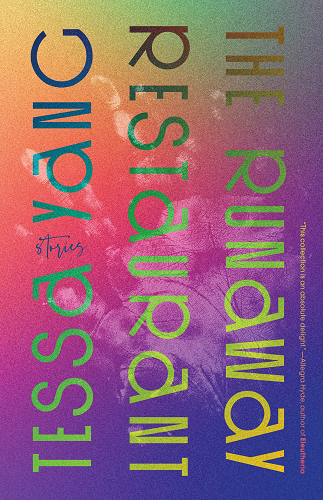
TY: Contrast is something I’m naturally drawn to as a writer. Horror and humor, playfulness and anger, the supernatural and the mundane. The balance begins with the idea: a ghost (unfamiliar) is trying to find a home in a world where people claim not to have room for her (familiar). Then my attention shifts to locating smaller contrasts within scenes. Is there an image that could suggest something sinister in an otherwise innocuous setting? Could an antagonist do something that reveals a glimmer of human absurdity? I remember when I was writing as a kid, and I would get to a scene that was really serious, I’d sometimes slip in a random joke to break out of the melodrama. I was always trying to work against the dominant atmosphere. Benjamin Percy refers to this technique as “modulation” in his craft book Thrill Me, but fundamentally I think it’s just how I keep my work surprising—and therefore interesting—to myself.
A delightful quality I noticed in your work is the inclusion of images. “The Mugged Body,” for example, is accompanied by an anatomical diagram that readers must refer back to in order to make sense of the story, which is itself about a character trying to make sense of a traumatic experience through the same image. I loved that metafictional layering and how it invited a type of engagement I don’t often see in fiction. How does visual material factor into your writing process?
SM: As an undergraduate, I minored in photography, and I’ve always been compelled by visual imagery. When I was working toward my PhD at the University of Utah, I was lucky to take a class on Visual Poetics with poet and essayist Paisley Rekdal, which is actually when I wrote “The Mugged Body.” The writing I do in response to visual images is often less linear than some of my other writing, perhaps getting closer to poetry than many of us prose writers usually venture. There are a number of stories in WAATW that have a connection to visual images that aren’t included with the story. “Shelter,” for example, begins with the description of a photograph that is similar to my parents’ wedding photograph, and I often think of that story as a prose scrapbook of a fictional family. I began writing it when I was taking a course on the history of documentary film and photography. “Benevolence,” too, began in relation to material I encountered in that course about Jeremy Bentham’s Panopticon, and the work of Francis Galton, whose ideas led to the development of the pseudoscience of phrenology. Now that I think about it, my interest in visual images, especially photography, is always lurking pretty near the surface, but more simply, I really love sifting through old photographs and postcards and daydreaming about the people and places I see in them. I hope to share this little delight—and part of my process—with my readers.
The Runaway Restaurant has been out in the world for about six months now. What was the path to publication like for you? And have there been any particular surprises or delights for you now that your stories have been gathered together and published as a book?
TY: My path was a little . . . backward? Circuitous? It wasn’t what I expected. An agent contacted me in 2019 after reading “Biohack” in Joyland and asked if I had any book-length work for her to consider. I sent her the version of The Runaway Restaurant I was working with at the time. She passed on it; I wasn’t too disappointed, since I knew story collections are hard sells for a lot of agents and had figured I’d be going the small-press route anyway.
A few months later, that’s what I did: send the manuscript around to contests and open reading periods. Leland, from 7.13 Books, got back to me in early 2020. He wanted to publish the book but encouraged me to do one serious round of querying first. He’s a writer himself and very supportive of authors exploring all their options. You only get one debut and you want it to land with the right people. So I ended up querying twenty-five or thirty agents with a book deal in my back pocket, which felt strange. This was also spring of 2020—a strange and scary time. I got a handful of manuscript requests but no takers. I ended up signing with 7.13 in December and feeling really positive about the decision, in part because I’d taken those eight months to think it through and learn more about the press. Since it would be almost two years until The Runaway Restaurant was released, I was able to continue revising the stories and even write a new one, which replaced a piece in the original manuscript that had never fully satisfied me.
As for surprises or delights, I did sign with an agent last year, who reached out after she read The Runaway Restaurant. Another delight has been hearing from people in my life who’ve read my book, some of them folks I haven’t seen or spoken to in years. I love hearing people’s reactions to particular stories. My sister (a fellow cat lady) got a kick out of the cat-summoning superpowers in “Others Like You.” A friend got literal chills on the last page of “Princess Shipwreck.” One of my aunts was a little afraid of “Biohack.” I know how busy everyone is, and I’m honored that anyone wants to carve out a few minutes or hours to spend with my stories . . . even if I freak them out!
What role have literary magazines played in your publishing process and development as a writer? What’s one magazine more people should be reading?
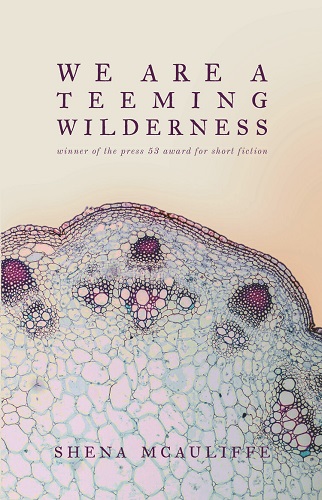
SM: It’s hard to overestimate the role that literary magazines have played in my development as a writer. Almost all of the stories included WAATW were first published in a literary magazine, and these small successes allowed me to build the collection slowly, while enjoying the occasional satisfaction of seeing my stories in print, among admirable work by other writers. And online journals have provided an accessible platform that reaches readers beyond our sometimes narrow literary circles. And the deeply committed editors of these journals have helped me revise stories into better versions of themselves, so I owe a lot to editors that selected and helped refine my stories over the years. Of course I have experienced my fair share of rejections too, which has invited me to rethink my work, or even sometimes just let one go and move on to new work.
As for one magazine people should be reading—it’s so difficult to pick a single journal above all the others! But I really love the work that Copper Nickel has been publishing. They always have an amazing, compelling cover design, with more visual art inside, and a balance of formally inventive writing that is sometimes meditative, sometimes voice-driven, always thought-provoking.
What about you? Do you have a must-read lit journal these days? And while we’re on the topic of recommendations, do you have any favorite short story collections?
TY: I’m a fan of the whole Escape Artists family of genre fiction podcasts: Escape Pod, PseudoPod, PodCastle, and CatsCast. I have a hard time paying attention to audiobooks, but a twenty- to forty-minute story is perfect for breaking up a long drive. When reading, I can’t help but notice details like paragraph length, sentence structure, and whether an author likes the semicolon a little too much (spoken as someone who likes the semicolon a little too much). Being read to transports me back to that childhood state where I’m simply being swept up in the pleasure of the story.
Her Body and Other Parties by Carmen Maria Machado remains one of my favorite books ever. I also recently reread, and loved even more the second time, Lesser Known Monsters of the 21st Century by Kim Fu. Those are both authors who can sell you on the strangest concept in three sentences and then spend the rest of the story spinning magic from it.
I’ll wrap up with a question that I ponder a lot these days: How do you define success as an author? How much does publication factor into it?
SM: Great question! My understanding of “success” is always shifting. One of the most thrilling moments in my writing life was when I received my very first acceptance from a literary magazine. And there have been many triumphs since then. I try to remember to pause and acknowledge successes when they come, because, of course, a writing life is also full of feelings of failure, and we’re always setting another goal for ourselves. It’s easy to let success become something that is measured only externally—by publication, book deals or sales, prizes, reviews . . . But publishing a book is a milestone that provides a sense of satisfaction, and a feeling of closure on a project or era of one’s writing life. I wrote the stories in We Are a Teeming Wilderness across a decade and a half; each story felt like a success when I finished it, and to have them together, in a collection, gives them a second life. Now these stories are in conversation with each other, and they’ve become more shareable.
But writing and publishing are separate activities. Our stories, and especially our books, often make their way into the world long after we’ve written them, if they make it into the world at all. Writing is and must be its own pleasure, and for me, there’s nothing like the feeling of getting lost in a story when I’m writing it—the infinite possibilities, the flights of imagination and discovery, the surety that this one will really get at something amazing. The feeling of writing, when it’s going well, is the only thing that can really keep me coming back to it. Ultimately, the biggest success is just being there, deep in the words, and experiencing that rare feeling of flying.
And you? How do you define success as an author these days?
TY: I relate to a lot of what you said. Publishing does play a role in how I think about success. I’m writing to reach people, and at its core, that’s what publishing is about: a work meeting a public. Publishing also helped me to develop a sense of professionalism as an author, to move from “person-who-writes” to “writer.” That kind of validation matters, particularly in a society that is quick to relegate artistic pursuits to hobbies.
But as you aptly put it: Writing and publishing are separate activities. I experience victories on the page that will never be validated through a publication or award. Maybe it’s manipulating syntax into a prose rhythm that perfectly mirrors the action of a scene. Or placing a super satisfying retort in the mouth of a character finally learning to stick up for herself. Or finding the right description for a look on someone’s face, a certain shade of green, a thunderstorm, a birthday cake, a spaceship. This is success at the level of imagination and language, and it’s why I write: to figure out what I want to say and then say it with absolute precision, over and over again.
Shena McAuliffe‘s essay “Overgrown Stairway, Richmond, Indiana” was published in The Cincinnati Review‘s Issue 15.1. She is the author of the novel The Good Echo (Black Lawrence Press, 2018), the essay collection Glass, Light, Electricity (University of Alaska Press, 2020), and a collection of short stories, We Are a Teeming Wilderness, winner of the 2022 Press 53 Prize for Short Fiction. She grew up in Wisconsin and Colorado, and now lives in Schenectady, New York, where she is an assistant professor of fiction at Union College.
Tessa Yang‘s story “Night Shift” appeared in The Cincinnati Review‘s Issue 17.1 and will be reprinted in A Flame Called Indiana: An Anthology of Contemporary Hoosier Writing, forthcoming from Indiana University Press later this year. Her debut story collection, The Runaway Restaurant, was published by 7.13 Books in 2022. She is an assistant professor of literature, media, and writing at Hartwick College and is currently at work on a novel. Find her on Twitter: @ThePtessadactyl.
